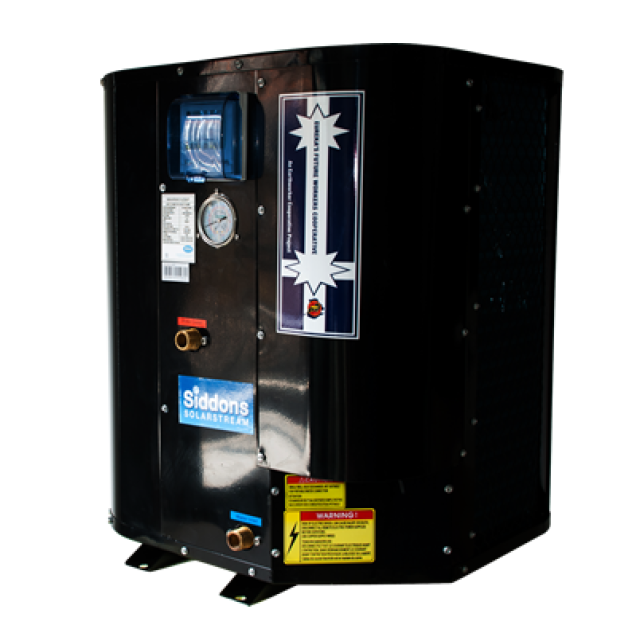
Workers cooperative EarthWorker demonstrated their newly made heat pumps and water storage tanks at Melbourne’s Trades Hall on May 18.
The cooperative aims to create local jobs and provide clean energy to help fight the climate crisis at the same time. It has just launched its first solar hot water systems, made at a worker-owned factory in Morwell.
During the event at Trades Hall, members of the cooperative were happy to demonstrate and explain the capabilities of their new systems.
The solar hot water system consists of two parts: the bolt-on solar heat pump and a water storage tank.
The solar heat pump uses reverse-application technology commonly found in fridges. It absorbs and extracts solar heat from the air using a built-in electrical fan. The unit contains a refrigerant that boils at -26°C. This means that at any air temperature hotter than this, the refrigerant liquid becomes a gas, which can be compressed.
The heat pump uses a very small amount of electricity — enough for household photovoltaic solar panels to power it to run a compressor. This compresses the refrigerant gas, which heats to 95°C.
This is used to heat the hot water via the heat pump’s Dynamic Cycle heat exchanger, and the water then goes to the water storage tank, ready to be used.
The system has also proven to be very energy efficient — 1kW/h of power yields 3.6 kW/h of heat at 20°C. Efficiency rises by more than 20% for every 10°C rise in air temperature.
EarthWorker’s project officer Dave Kerin told Green Left Weekly they are planning to distribute the solar hot-water systems throughout the state.
He said: “We are currently in the process of negotiating distribution of the solar hot water systems through union-negotiated enterprise bargaining agreements. One of our latest partners has been the National Tertiary Education Union branch of the Federation University, particularly in the Gippsland Campus.”
Earth Worker is also planning to set up a social justice fund, with 5% of all surplus produced by the cooperative going towards the support of low-income income households that are currently dealing with the impacts of climate change and increasing heat waves.
The funds will go towards the installation of solar roof ventilators, which provide a highly effective, low energy, cheap house-cooling alternative to air conditioning for disadvantaged households.